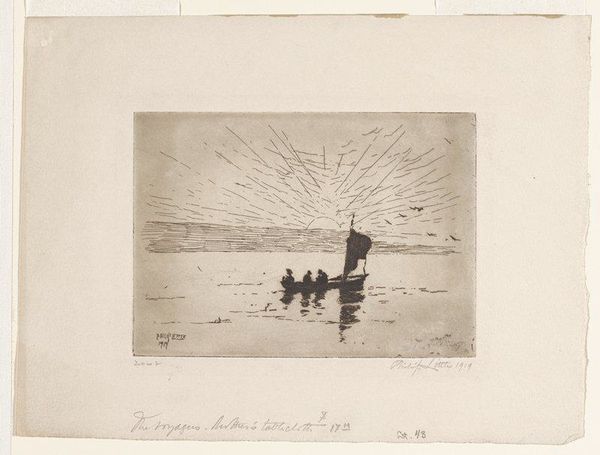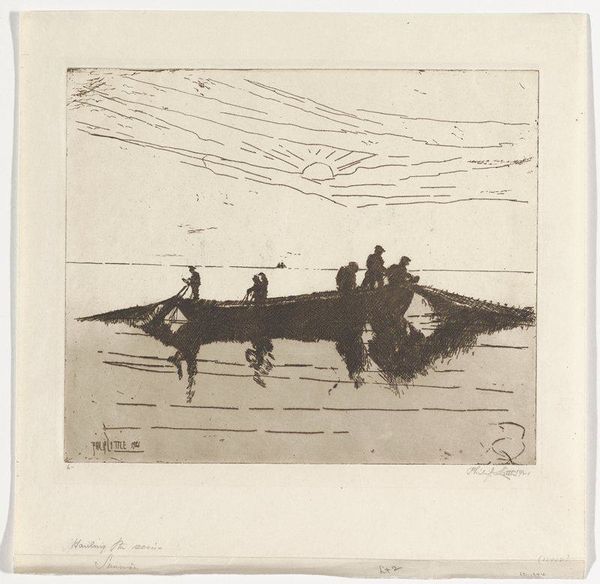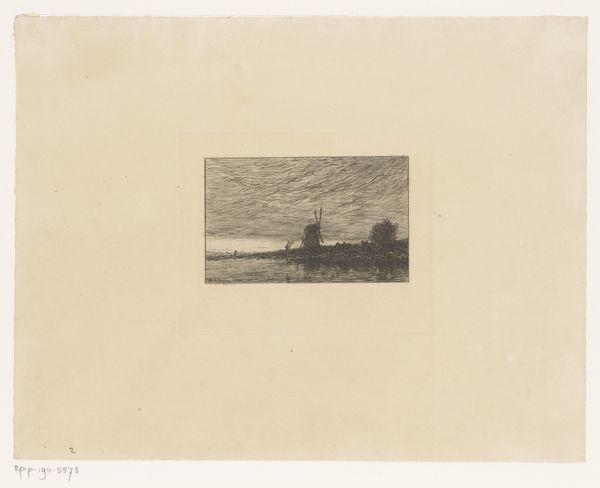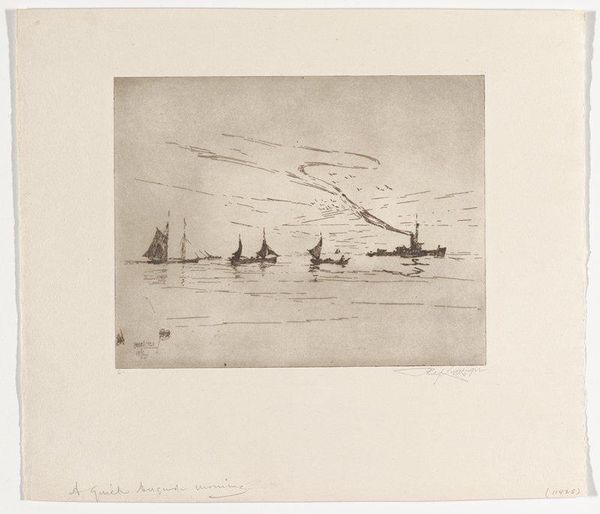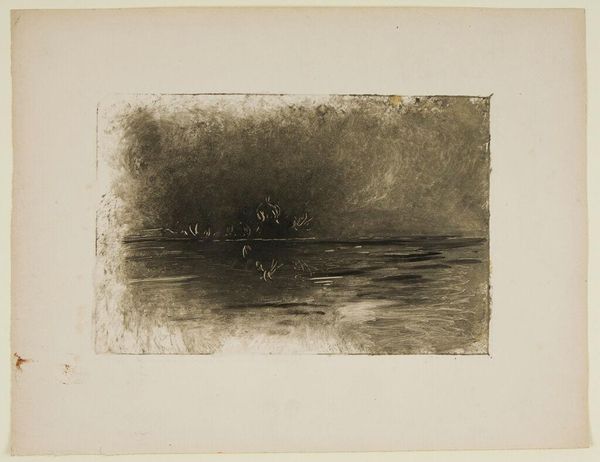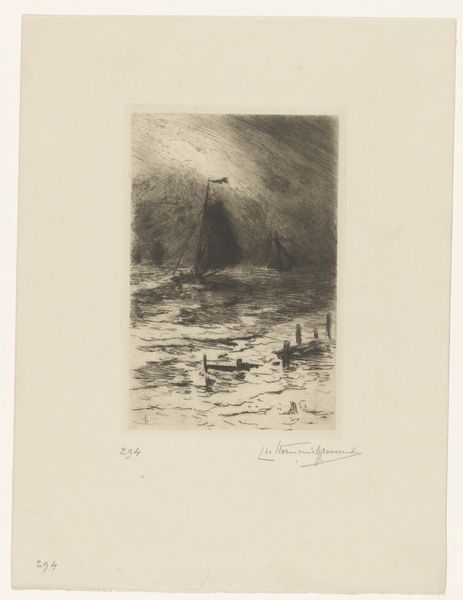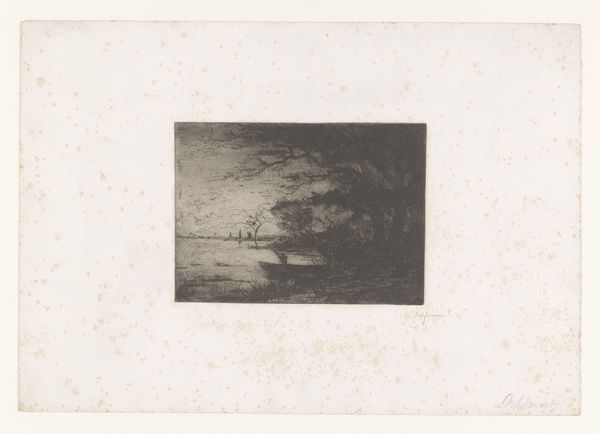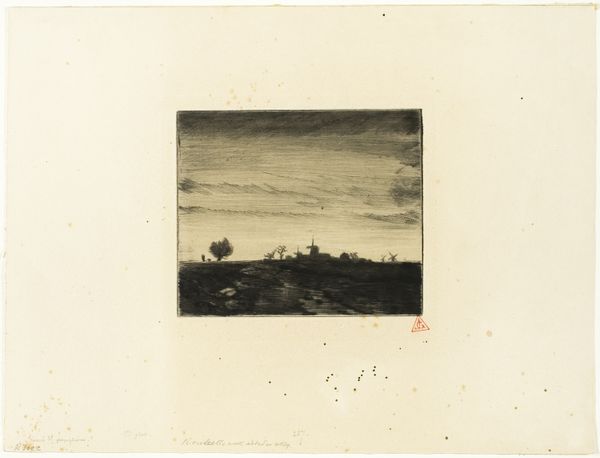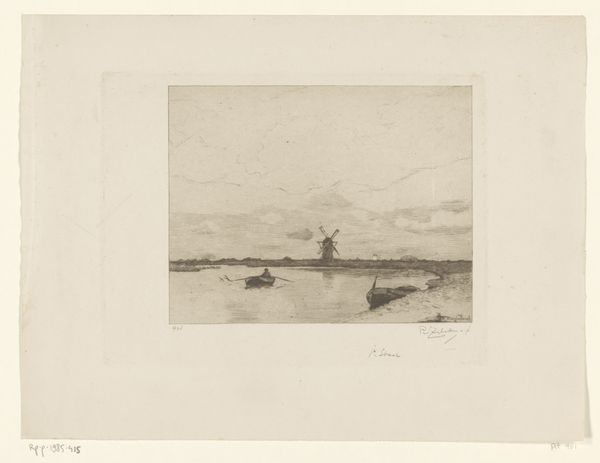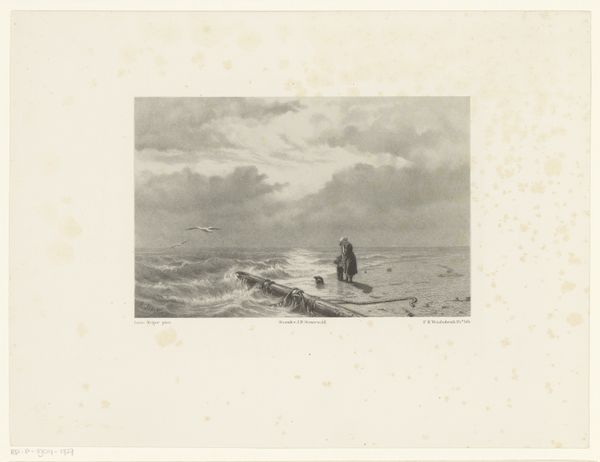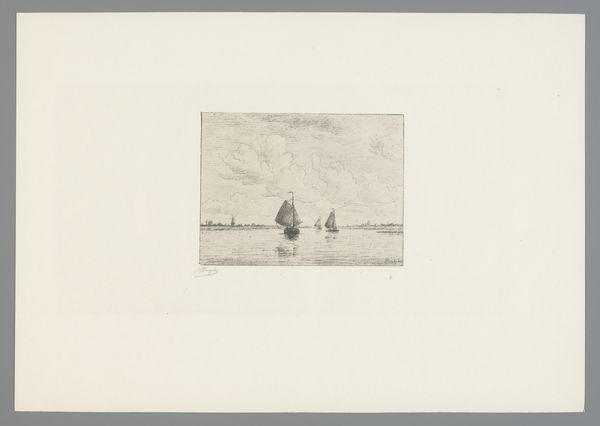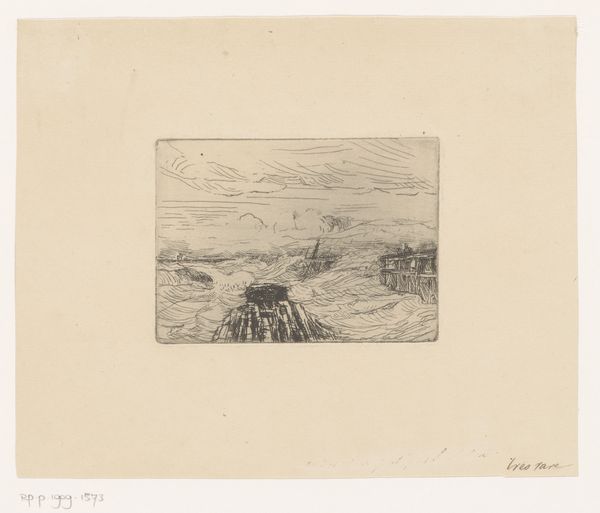
Dimensions: 4 15/16 x 6 15/16 in. (12.54 x 17.62 cm) (plate)8 3/4 x 11 1/2 in. (22.23 x 29.21 cm) (sheet)
Copyright: No Copyright - United States
Curator: "The Voyagers - Mother's Tablecloth" is an etching made by Philip Little in 1919. It’s part of the Minneapolis Institute of Art’s collection. Editor: It’s quiet, isn’t it? Bleak almost, despite what appears to be a sunrise. There's something very contained, and maybe somber, about it. Curator: I’d agree it possesses a certain restraint. Note the artist’s emphasis on line work; look at how he creates depth and light solely through carefully placed marks. There is almost a mathematical precision to the radiating sun. Editor: And a starkness that speaks, perhaps, to a generation processing loss and grappling with identity in the wake of World War I. I can't help but consider the 'mother' referenced in the title. Motherhood in 1919 was fraught with new meanings, both hopeful and devastating, as families navigated unprecedented social upheaval and profound grief. Curator: An intriguing interpretation. Certainly, one could read such themes into the piece, but I’m more inclined to see it as a formal study in contrasts. The dark boat against the burgeoning light; the stillness of the water reflecting the energy above. These oppositions are visually very potent. Editor: Yet it isn't a perfect contrast, is it? The reflection below is muddied, imperfect, and that resonates. What about the choice to represent figures as indistinct? What social roles might be suggested in this choice? Curator: Little leaves much to the imagination of course. This etching style, common to impressionism, invites contemplation rather than prescribing a particular narrative. One finds meaning through structure and form alone, absent any contextual understanding. Editor: I wonder if Little, perhaps subconsciously, captured the silent resilience of communities rebuilding. This print can hold the intimate alongside broader social dialogues; and that intersection is exciting to explore. Curator: Yes, it invites a continued viewing. The balance created through simple geometric forms makes it deeply rewarding in the visual sense alone. Editor: Precisely, by acknowledging history while exploring line and form, perhaps we gain greater insight to ourselves as individuals.
Comments
No comments
Be the first to comment and join the conversation on the ultimate creative platform.
